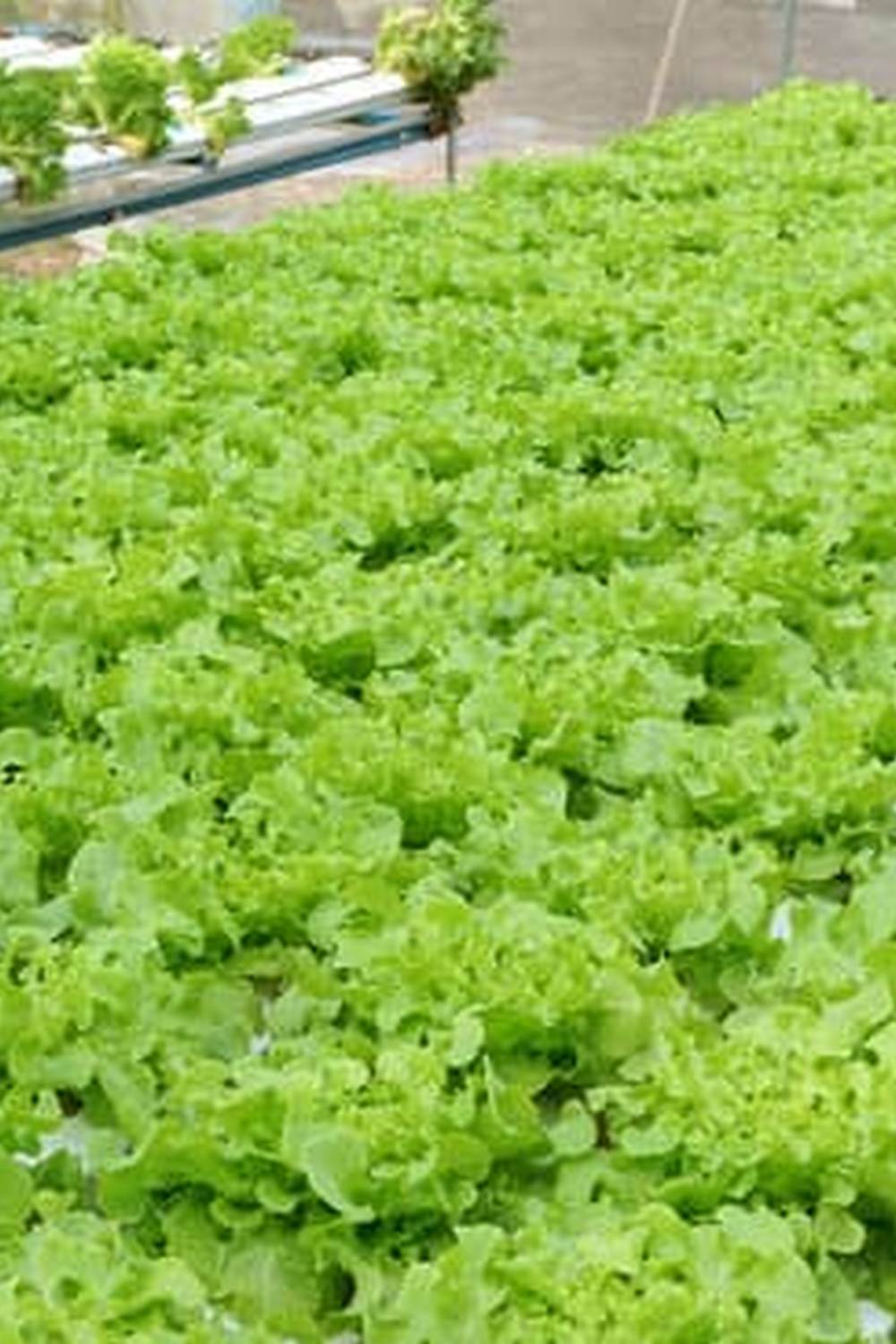French provincial vegetable gardens are known for their rustic charm and timeless beauty, reflecting the romantic allure of the French countryside. These gardens offer a blend of practicality and aesthetics, combining functionality with a touch of elegance. In this article, we will delve into the history, key elements, popular vegetables, essential tools, seasonal planting guide, tips for creating your own garden, and famous examples of French provincial vegetable gardens around the world.
Originating in the picturesque regions of France, where agriculture is deeply embedded in the culture, French provincial vegetable gardens have been cultivated for centuries. They evolved as a means to provide fresh produce for households while also serving as a place of beauty and relaxation. The design philosophy behind these gardens emphasizes symmetry, structure, and harmony with nature, creating a serene and inviting atmosphere.
The layout and design of French provincial vegetable gardens typically feature geometric patterns, well-defined pathways, and decorative elements such as trellises and arbors. Intertwining formality with informality, these gardens exude a sense of effortless sophistication. Whether you aspire to recreate a traditional potager-style garden or infuse modern touches into your design, understanding the key elements will help you bring the charm of French provincial vegetable gardens into your own outdoor space.
History and Origins of French Provincial Vegetable Gardens
The history and origins of French Provincial Vegetable Gardens are deeply rooted in the cultural and culinary traditions of France. Dating back to the Renaissance period, these gardens were initially created by French nobility and aristocrats to showcase their wealth and status. However, over time, they became more accessible to the general population as a means of self-sufficiency and sustainability.
One of the defining features of French Provincial Vegetable Gardens is their geometrically structured layout, known as “potager” in French. These gardens are meticulously divided into neat rows or sections, with pathways for easy access and maintenance. Additionally, ornamental elements such as trellises, arbors, and decorative fencing are often incorporated to enhance the overall aesthetic appeal.
The design of French Provincial Vegetable Gardens also emphasizes the concept of companion planting, where specific vegetables are strategically grouped together based on their compatibility and beneficial interactions. This practice not only maximizes space utilization but also helps prevent pests and diseases naturally. Some common pairings include tomatoes with basil, carrots with onions, and cucumbers with dill.
| French Vegetable | Companion Plant |
|---|---|
| Tomatoes | Basil |
| Carrots | Onions |
| Cucumbers | Dill |
Key Elements of French Provincial Vegetable Gardens
French Provincial vegetable gardens are known for their charming and picturesque layouts, often reminiscent of the traditional gardens found in the countryside of France. The design principles behind these gardens are key to creating a visually appealing and functional space for growing a variety of vegetables. Let’s explore some of the key elements that characterize French Provincial vegetable gardens:
- Symmetry: One of the defining features of French Provincial vegetable gardens is the use of symmetrical designs, with paths, beds, and planting areas arranged in a balanced and harmonious layout. This sense of order and balance creates a pleasing aesthetic that is both beautiful and practical.
- Formality: French Provincial gardens often feature formal elements such as geometric shapes, clipped hedges, and neatly edged beds. These formal design elements add a sense of elegance and structure to the garden, enhancing its overall beauty.
- Ornamental Features: In addition to growing vegetables, French Provincial gardens typically include ornamental features such as trellises, arbors, fountains, and statues. These decorative elements add interest and charm to the garden, creating a delightful atmosphere that invites relaxation and enjoyment.
Incorporating these key design elements into your own French Provincial vegetable garden can help you create a stunning outdoor space that not only provides fresh produce but also serves as a beautiful and inviting retreat in your own backyard. Whether you have a large plot of land or just a small corner to work with, embracing the layout and design principles of French Provincial gardens can elevate your gardening experience to new heights.
Remember that while symmetry, formality, and ornamental features are important aspects of French Provincial vegetable gardens, it’s also essential to personalize your space to reflect your own style and preferences. Experiment with different layout options, mix colors and textures in your plantings, and add unique touches that speak to your individual creativity.
By putting your own personal stamp on your French Provincial vegetable garden, you can truly make it a one-of-a-kind sanctuary that brings joy and satisfaction every time you step outside.
Popular Vegetables Grown in French Provincial Vegetable Gardens
French provincial vegetable gardens are renowned for their bountiful harvests of fresh and flavorful produce, making them a popular choice among garden enthusiasts. These traditional gardens typically feature a variety of vegetables that thrive in the Mediterranean climate of southern France. From vibrant tomatoes to fragrant herbs, there is a wide range of crops that are commonly grown in French provincial vegetable gardens.
One of the quintessential vegetables found in French provincial gardens is the artichoke. Known for its unique flavor and meaty texture, artichokes are a staple in French cuisine. They thrive in the warm climate and well-drained soil of these gardens, making them a popular choice for home gardeners looking to add some elegance to their vegetable plots.
Another favorite vegetable among French gardeners is the zucchini. This versatile summer squash can be grilled, sautéed, or even baked into delicious breads and cakes. In French provincial vegetable gardens, zucchinis are often planted alongside other companion plants like tomatoes and basil to create a harmonious and productive growing environment. Whether you prefer yellow crookneck or dark green varieties, zucchinis are sure to add a touch of freshness to your garden harvests.
Essential Tools and Techniques for Maintaining a French Provincial Vegetable Garden
French provincial vegetable gardens are known for their beauty, productivity, and traditional charm. To maintain a thriving French Provincial Vegetable Garden, it is essential to have the right tools and techniques at your disposal. One of the key tools for maintaining this type of garden is a high-quality hand trowel. This versatile tool is perfect for planting, transplanting, and weeding in the garden with precision and care.
In addition to a hand trowel, investing in a sturdy pair of gardening gloves can make a world of difference when it comes to maintaining a French Provincial Vegetable Garden. These gloves will protect your hands while you work in the garden and help prevent blisters or injuries. Another important tool to have on hand is a sharp pair of pruning shears, which are necessary for trimming plants, deadheading flowers, and keeping your vegetable garden neat and tidy.
When it comes to techniques for maintaining a French Provincial Vegetable Garden, one important aspect is proper watering. It’s crucial to water deeply but infrequently to encourage deep root growth in your vegetables. Mulching is also essential to retain moisture in the soil, suppress weeds, and regulate soil temperature. Additionally, regular monitoring of pests and diseases is vital to catch any issues early before they can cause significant damage to your garden.
| Tools | Techniques |
|---|---|
| Hand trowel | Proper watering |
| Gardening gloves | Mulching |
| Pruning shears | Pest and disease monitoring |
Seasonal Planting Guide for French Provincial Vegetable Gardens
When planning and maintaining a French Provincial vegetable garden, it is essential to consider the seasonal planting guide. By understanding which vegetables thrive in each season, you can ensure a successful and bountiful harvest year-round. Here are some key guidelines to keep in mind when planting in your French Provincial vegetable garden:
- Spring: During the spring season, it is the perfect time to plant cool-season crops such as lettuce, spinach, radishes, and peas. These vegetables prefer the milder temperatures of spring and will yield delicious results.
- Summer: In the summer months, you can plant warm-season crops like tomatoes, peppers, cucumbers, zucchinis, and eggplants. These vegetables require plenty of sunlight and warm temperatures to flourish.
- Fall: As the weather starts to cool down in the fall, you can plant root vegetables such as carrots, beets, turnips, and potatoes. These hearty vegetables are perfect for storing over the winter months.
By following this seasonal planting guide for your French Provincial vegetable garden, you can maximize your harvest and enjoy a variety of fresh produce throughout the year. Proper planning and attention to seasonal needs will help you create a thriving and beautiful garden inspired by the charm of traditional French gardens.
Remember that regular maintenance, proper watering techniques, and soil care are also crucial aspects of nurturing a successful French Provincial vegetable garden. Pay attention to your plants’ individual needs and adjust your gardening practices accordingly to ensure a flourishing harvest each season.
Incorporating this seasonal planting guide into your gardening routine will allow you to embrace the timeless beauty of French Provincial vegetable gardens while reaping the rewards of fresh and flavorful produce from your own backyard. With dedication and care, you can create a stunning sanctuary that reflects the sophistication and elegance of traditional French horticulture.
Tips for Creating a Stunning French Provincial Vegetable Garden in Your Own Backyard
Creating a French Provincial vegetable garden in your own backyard is a delightful way to bring a touch of elegance and charm to your outdoor space. With its romantic and rustic appeal, a French Provincial garden can transport you to the idyllic countryside of France right in your own home. To help you get started on this exciting gardening journey, here are some valuable tips to create a stunning French Provincial vegetable garden in your backyard.
Choosing the Right Location and Layout
The first step in creating a beautiful French Provincial vegetable garden is selecting the perfect location. Choose a spot in your yard that receives ample sunlight throughout the day, as most vegetables thrive in sunny conditions. Additionally, consider the layout of your garden – traditional French Provincial gardens often feature geometric designs with defined borders and pathways. Incorporating elements such as raised beds, trellises, and ornate ironwork can further enhance the overall charm of your garden.
Selecting Authentic Plant Varieties
To truly capture the essence of a French Provincial vegetable garden, it’s important to choose plant varieties that are commonly grown in France. Classic vegetables such as heirloom tomatoes, zucchini, carrots, lettuce, and herbs like lavender and thyme are staples in these gardens. Adding colorful flowers like roses or sunflowers can also elevate the aesthetic appeal of your garden while attracting beneficial pollinators.
Incorporating Decorative Features
In addition to growing an array of vegetables and herbs, incorporating decorative features into your French Provincial vegetable garden can enhance its visual appeal. Consider adding vintage-inspired elements like antique urns, wooden trellises, rustic stone pathways, or charming seating areas where you can relax and enjoy the beauty of your garden. Adding elements that evoke the timeless elegance of French country style will infuse character and authenticity into your backyard oasis inspired by french provincial vegetable gardens.
Famous French Provincial Vegetable Gardens Around the World
Villandry, France
One of the most iconic French provincial vegetable gardens in the world is located at the Château de Villandry in France. Known for its meticulous geometric patterns and vibrant colors, this garden showcases the traditional beauty and elegance of French gardening. Visitors can wander through different sections like the Ornamental Kitchen Garden, Water Garden, and Sun Garden to admire a wide variety of vegetables and flowers grown in perfect harmony.
Hampton Court Palace Gardens, England
While not in France, Hampton Court Palace Gardens in England also boasts a stunning French provincial vegetable garden known as the King’s Vegetable Garden. This historic garden dates back to the 17th century and follows the principles of symmetry and balance typical of French garden design. Visitors can explore rows of neatly arranged vegetables such as artichokes, lettuce, and herbs, all set against a backdrop of ornate hedges and trellises.
Claude Monet’s Garden, Giverny
Claude Monet’s famous garden in Giverny, France is not only renowned for its enchanting water lilies but also for its charming French provincial vegetable garden. The artist designed his garden with an artist’s eye, combining vibrant colors and textures to create a picturesque setting that inspired many of his paintings. The vegetable garden at Giverny features a variety of produce including pumpkins, tomatoes, and beans grown alongside colorful flowers like roses and irises.
Conclusion
French provincial vegetable gardens are truly a timeless symbol of elegance and practicality, blending traditional charm with exquisite functionality. As we have delved into the history, design elements, popular vegetables, maintenance tips, and seasonal planting guide of these gardens, it is evident that they hold a special place in the hearts of garden enthusiasts around the world.
The allure of French provincial vegetable gardens lies in their ability to not only provide fresh produce but also create an inviting and picturesque space in any backyard.
When creating your own French provincial vegetable garden, remember to pay attention to the layout and design elements that define this style – symmetry, formality, and a touch of rustic simplicity. Incorporate classic vegetables like tomatoes, lettuce, and herbs for an authentic touch, using the essential tools and techniques recommended for maintaining these bountiful gardens. Following a seasonal planting guide will ensure a successful harvest year-round while adding to the beauty of your garden with each passing season.
Whether inspired by the grandeur of famous French provincial vegetable gardens or simply eager to bring a touch of European flair to your outdoor space, embracing this style is sure to elevate your gardening experience. The allure of these gardens lies not only in their aesthetic appeal but also in their practicality and sustainability.
So why not channel your inner Francophile and embark on the journey of creating your own stunning French provincial vegetable garden right in your backyard? Let nature’s beauty shine through as you indulge in the art of cultivating a piece of France amidst your local landscape.
Frequently Asked Questions
What Is the French Style of Vegetable Gardening?
The French style of vegetable gardening, known as “potager garden,” is characterized by its organized layout and aesthetic appeal. These gardens typically feature geometric patterns with raised beds, carefully planned crop rotations, and a mix of vegetables, herbs, and flowers.
What Vegetables Grow Well in France?
In France, several vegetables flourish due to the country’s diverse climate and fertile soil. Some popular vegetables that grow well in France include lettuce, tomatoes, zucchini, peppers, cucumbers, carrots, radishes, beans, onions, and garlic. These vegetables are commonly found in French cuisine and are staples in many dishes.
What Is the Difference Between French and English Gardens?
The main difference between French and English gardens lies in their design principles. French gardens tend to have a more formal layout with symmetrical patterns, clipped hedges, elaborate ornaments like statues or fountains, and carefully curated flower beds.
In contrast, English gardens are often more informal and natural-looking with meandering paths, wildflower arrangements, and a greater focus on blending into the surrounding landscape.

If you’re looking to get into vegetable gardening, or are just looking for some tips on how to make your current garden better, then you’ve come to the right place! My name is Ethel and I have been gardening for years. In this blog, I’m going to share with you some of my best tips on how to create a successful vegetable garden.





